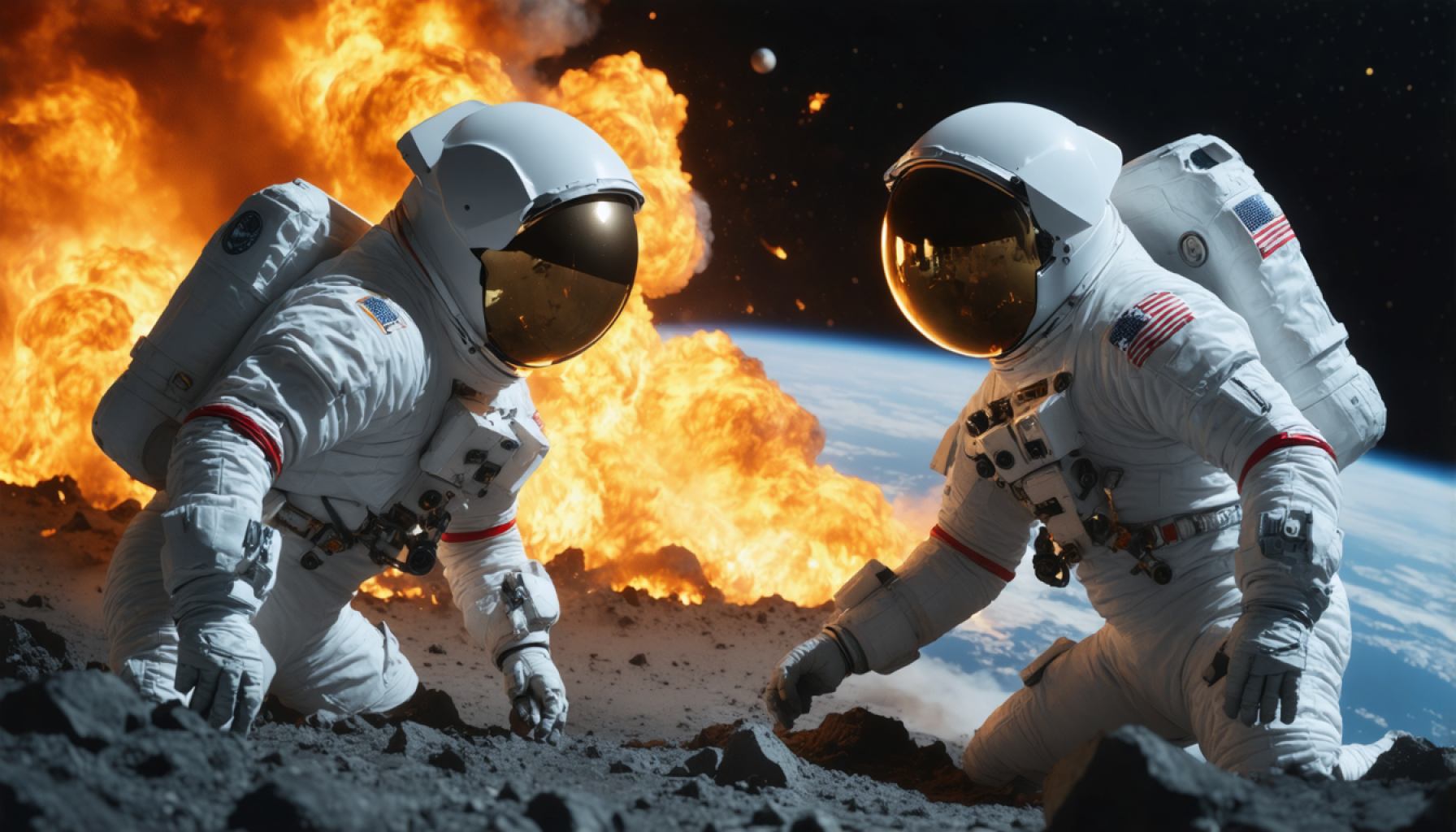- A heated debate involving Elon Musk and Danish astronaut Andreas Mogensen highlights tensions around astronaut return plans from the ISS.
- Musk criticized NASA’s decision to delay the return of astronauts Butch Wilmore and Sunita Williams, citing political interference.
- Mogensen defended the planned return via the Dragon capsule, refuting claims of astronauts being ‘stranded.’
- Chris Hadfield praised the professionalism of the astronauts amidst the controversy.
- The conflict underscores Musk’s influence and challenges in the partnerships that support the ISS.
- Musk hinted at accelerating the ISS’s retirement to focus on Mars exploration.
- This incident reflects the complex interplay of ambition, politics, and collaboration in space exploration.
A cosmic drama ignites as SpaceX’s Elon Musk and Danish astronaut Andreas Mogensen find themselves entangled in a heated debate that transcends Earth’s atmosphere. This unfolding saga, both technical and political, captures attention far beyond the confines of the International Space Station (ISS).
With explosive words lighting up the virtual skies, Musk fiercely critiqued NASA’s decisions regarding the return of astronauts Butch Wilmore and Sunita Williams from the ISS. Accusations flew as Musk alleged that political maneuvering postponed their return, originally scheduled via Boeing’s troubled Starliner capsule. Musk, dissatisfied, purportedly offered SpaceX solutions, claiming bureaucratic rejection stood in the way.
Mogensen, not one to back down, provided a counter-narrative that illuminated a meticulously planned return via the Dragon capsule. His defense emphasized the astronauts’ ongoing dedication to their mission, dismissing any notion of them being ‘stranded.’
As the quarrel sizzled, retired Canadian astronaut Chris Hadfield rallied to calm the orbiting storm. He lauded the astronauts’ professionalism amidst the swirling controversy, reminding the public of the crew’s unwavering commitment and the adventurous spirit that defines space exploration.
Beyond the rhetoric, the reverberations of this public discord highlight Musk’s controversial influence and the intricate ballet of partnerships that sustain the ISS. Yet, amid fiery disagreements, the focus remains on space’s limitless horizon, as Musk provocatively suggests fast-tracking the ISS’s retirement to pursue Martian dreams.
While tensions simmer around return schedules and future missions, the spectacle serves as a stark reminder: space isn’t just the final frontier—it’s also a stage for human drama, ambition, and collaboration. Here on Earth and beyond, our gaze extends upwards, captivated by the celestial interplay of science, politics, and exploration.
Space Drama Unveiled: The Power Play Behind Musk’s ISS Row
Understanding SpaceX and NASA’s Spacecraft Debates
The recent public clash between Elon Musk’s SpaceX and astronaut Andreas Mogensen over NASA’s astronaut return plans spotlights deeper issues in space partnerships and logistics. The debate, originally over the choice of spacecraft for returning ISS astronauts, hints at broader tensions in space collaboration. Here’s a closer look:
How-To Steps & Life Hacks
Getting Astronauts Safely Home:
– Planning & Coordination: NASA meticulously plans missions, including backup options, to ensure astronaut safety.
– Craft Selection: Decisions are guided by craft readiness, reliability, and mission requirements.
– Emergency Protocols: Plans involve contingencies for rapid deployment if primary vehicles fail.
Life Hack: Stay updated on space missions via NASA’s media sites for real-time data on spacecraft and astronaut safety plans.
Real-World Use Cases
Spacecraft Utilization:
– SpaceX Dragon: Regarded for reliability and frequent use in NASA missions.
– Boeing Starliner: Experienced delays, impacting scheduling and planning.
Market Forecasts & Industry Trends
Space Exploration Market Growth:
– Expected to reach $558 billion by 2026, with increasing roles for private firms like SpaceX in governmental partnerships.
– NASA continually seeks advancements to keep pace with private sector innovation.
Reviews & Comparisons
SpaceX Dragon vs. Boeing Starliner:
– Dragon: High reliability rate, used for multiple successful ISS missions.
– Starliner: Ongoing developmental tweaks; facing issues impacting trust and timing.
Controversies & Limitations
Space Missions’ Political Underpinnings:
– Allocation of missions often involves political negotiations and stakeholder priorities, leading to tensions noted in Musk’s critique.
Features, Specs & Pricing
SpaceX Dragon Capsule:
– Capacity: Up to 7 passengers.
– Launch Cost: Majorly less than competitors, leveraging reusable design.
Boeing Starliner:
– Capacity: Similar to Dragon, designed for NASA’s Commercial Crew Program.
– Challenges: Higher launch costs due to ongoing development fixes.
Security & Sustainability
Sustainability Challenges in Spaceflight:
– Long-duration missions push for robust life-support systems and efficient waste recycling aboard ISS craft.
Insights & Predictions
Future of Space Partnerships:
– Expect stronger alliances between private firms and government bodies to explore Mars and beyond.
– Musk’s call to retire the ISS may push enhancements in space infrastructure sooner.
Tutorials & Compatibility
Training for Spacecraft Use:
– Astronauts engage in rigorous training to master varying spacecraft systems and prepare for any orbital scenarios.
Pros & Cons Overview
SpaceX Dragon:
– Pros: Proven track record, cost-efficient.
– Cons: Dependency on SpaceX timelines.
Boeing Starliner:
– Pros: Collaborative government history.
– Cons: Delay issues affecting reliability perception.
Recommendations & Quick Tips
– For Space Enthusiasts: Track updates on developing missions to follow space travel evolution.
– For Investors: Watch market trends; space sector (notably SpaceX) offers exciting growth windows.
– For the General Public: Engage with space exploration’s educational resources to better understand its impact on future tech.
By dissecting the intricate details of this space conflict, it’s clear that debates in the final frontier are not just about logistics but also about a vision for humanity’s future in space—anchored by ambition, collaboration, and innovation.
